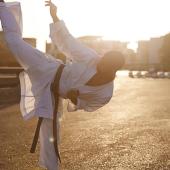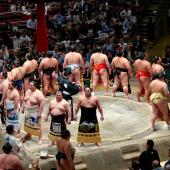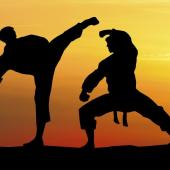Capoeira
Capoeira comes from Brazil and is due to the African NìGolo (zebra dance). Capoeira has already been a popular martial art style in South America since decades which has evolved in recent years in Europe as a trendy fitness style.
The techniques of capoeira have a rich repertoire of movement. Techniques of Asian martial arts and movement elements of African dances are interlaced. Moreover, acrobatics that remind on breakdancing are just some of the influences of capoeira. People practicing capoeira are called capoeiristas. The capoeiristas form a circle, the so-called "Roda", in which always two opponents compete against each other and playfully challenge each other to a duel. The capoeiristas are opponents and partners at the same time, who fight simultaneously, but who also provide an impressive show. Participants of Roda are musicians who create the rhythmic music. The fighters move to this rhythm.
The soul of the capoeira is Malìcia. This term can be interpreted as "malignancy". However, in Brazil it is rather perceived in a positive way, and is translated as "cunning" or "stratagem". Malìcia is often described as cunning snake in the songs of the Roda musicians who waits in her hole for prey. In this portrait it becomes clear that the capoeira fight is to convey a false impression at the opponents. Technique and fitness are not decisive for the victory, but the tactical overview over the game.
As in any other martial arts, at capoeira there is also a battle dress. This consists of a trouser and a T-shirt in various colour combinations. Moreover, in the "Regional Capoeira" there are also belt systems, which indicate the degree of the carrier. To reach the next stage the capoeirista needs to play with one or more masters or teachers in the Roda, needs to prove knowledge regarding capoeira music and needs to demonstrate or perform certain attack, defence and acrobatic movements.




